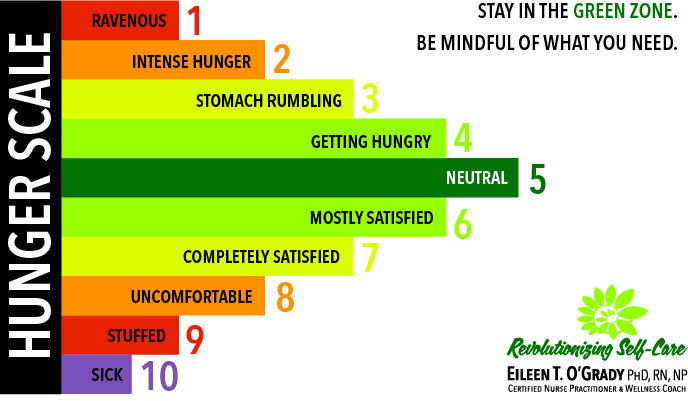Helping Patients Drive Out "Hangry"
Hangry=Hungry + Angry
“Between stimulus and response there is a space. In that space is our power to choose our response. In our response lies our growth and our freedom.” —Viktor Frankl
Finding Freedom by Creating Space
A client I am working with has been struggling with her weight for years. Determined to do something about it, she committed to interrupting her pattern of living and eating. Right away, she became aware that her eating habits were completely independent of her hunger cues. She would eat whatever was fast at 6 am, sometimes fast food, and work all day as a primary care provider in a high pressure job. Her office was in a rural area with no access to restaurants or food. Unless a drug salesperson brought in food, she would go without eating for up to 10 hours until she arrived home. Once home, she would quickly consume large amounts of comfort food, often to the point of feeling sick. She was stuck in a cycle of starving, over-eating, and repenting.
She started using the 10 point hunger scale and now assigns herself a number so that she stays between a “4” and “6” throughout the day to avoid the extremes. She has noticed that if she drops below a “2”, she enters the “hangry “ zone, which causes her to overeat (past an “8”). By avoiding getting too hungry and really tuning into her body, she now stops eating before she is uncomfortable. We can't manage what we don't measure and what we measure, improves.

Now down 20 lbs, she remedied her HANGRY condition by eating regular meals, stocking her office with real food and when her body tells her she’s hungry, she eats. She reports less hunger, the ability to better regulate what she is eating and feels empowered around food. She is directing her attention to responding to hunger cues and changing her relationship with food. She has become her own wise council by creating a space, a pause between the stimulus and her response to it, so she can be in the great land of choice. She has entered the land of true freedom.
As you talk to patients about weight, determine if their eating pattern is disinhibited, and if so, have them begin to use the hunger scale. It is a simple tool, but disordered eating is a complicated, often chaotic arena as many people have no notion of when they are physiologically hungry. Addressing self-defeating patterns starts with gaining mindfulness around hunger cues and responding to them.
If you want to lose weight, don’t go on a diet.
Here's a summary of a study on parents who display high levels of disinhibited eating, especially when coupled with high dietary restraint, on a child’s eating patterns.
Dr. Eileen T. O’Grady is a certified nurse practitioner and wellness coach who specializes in getting people unstuck from lifestyles that do not support wellness. She can be contacted at www.eileenogrady.net


